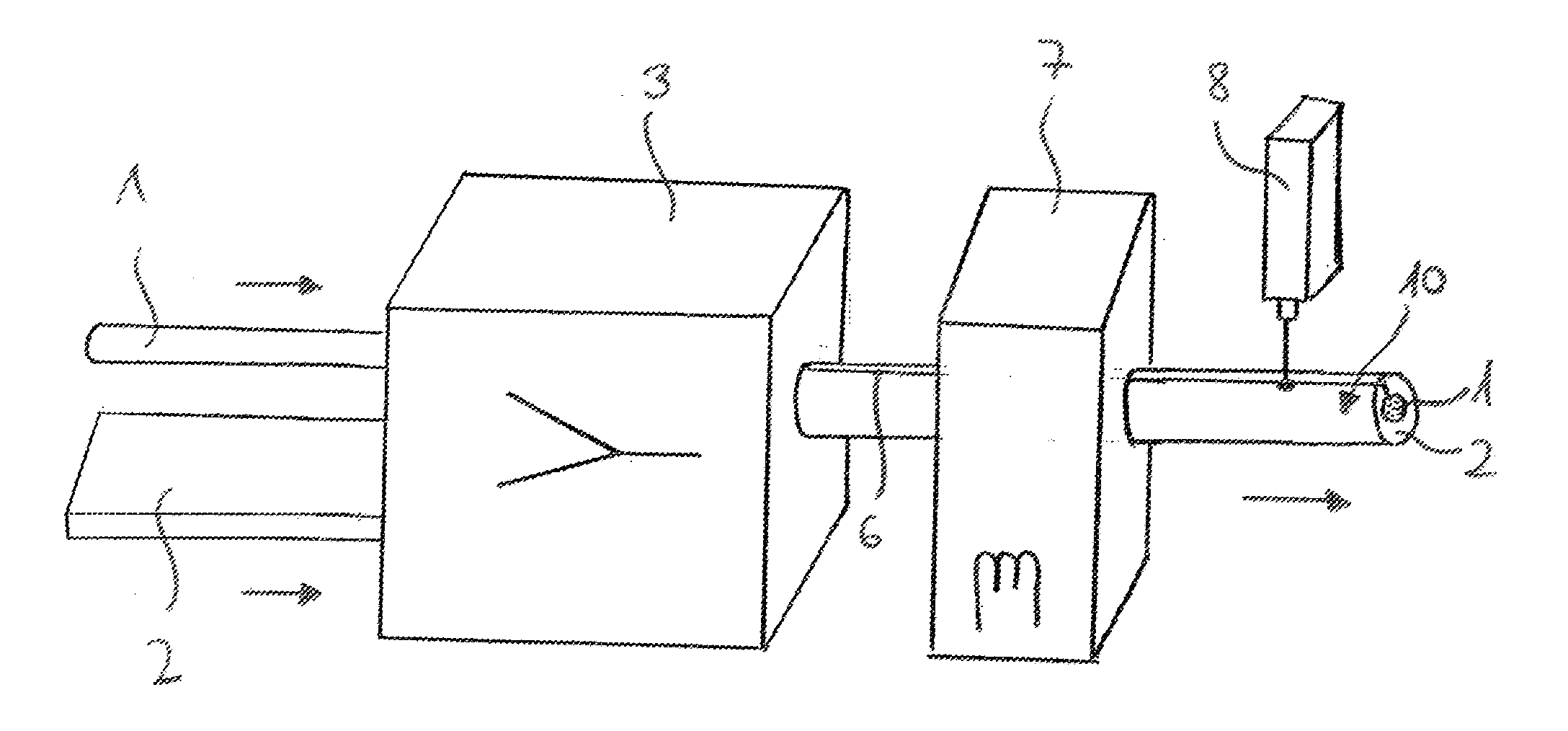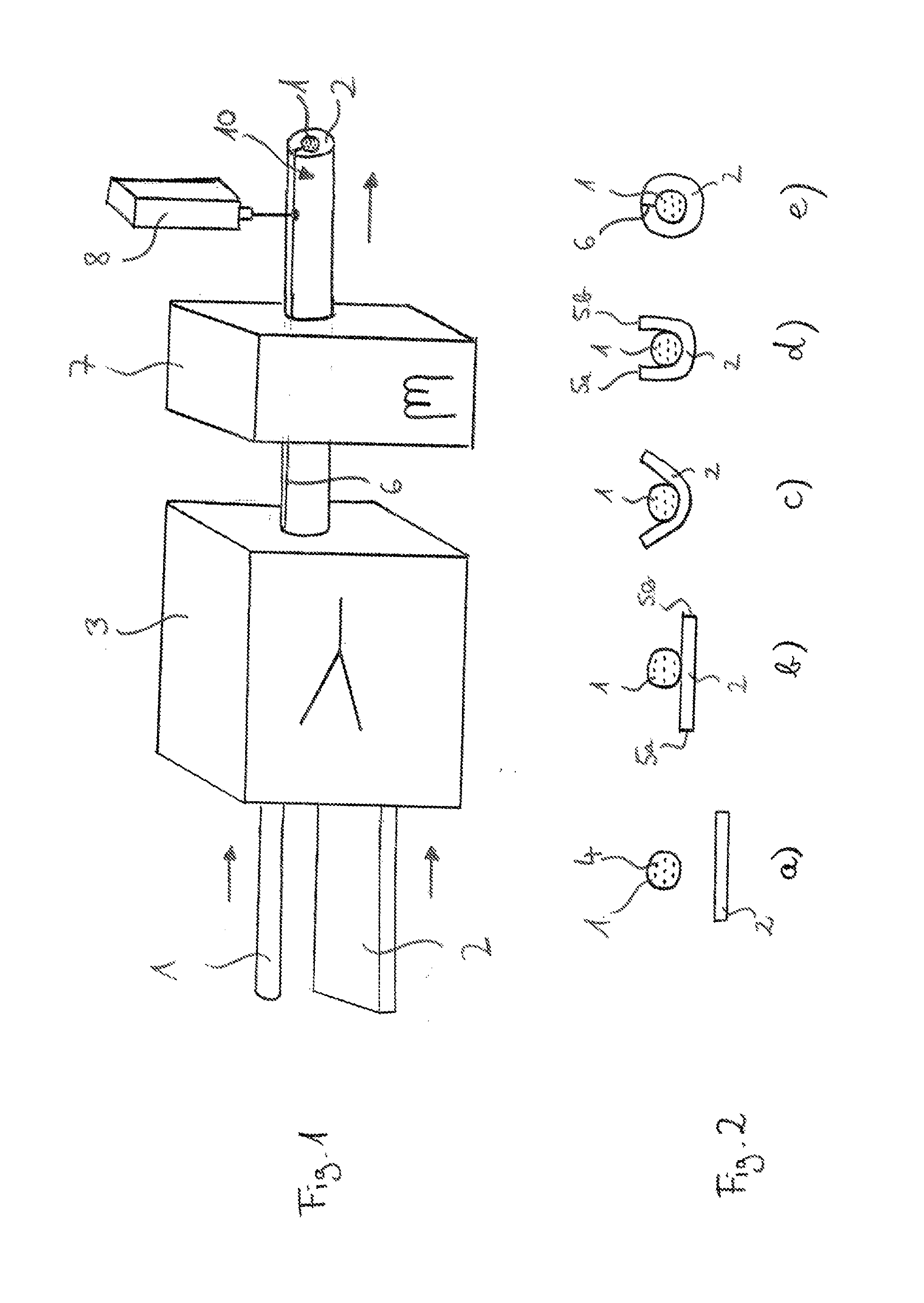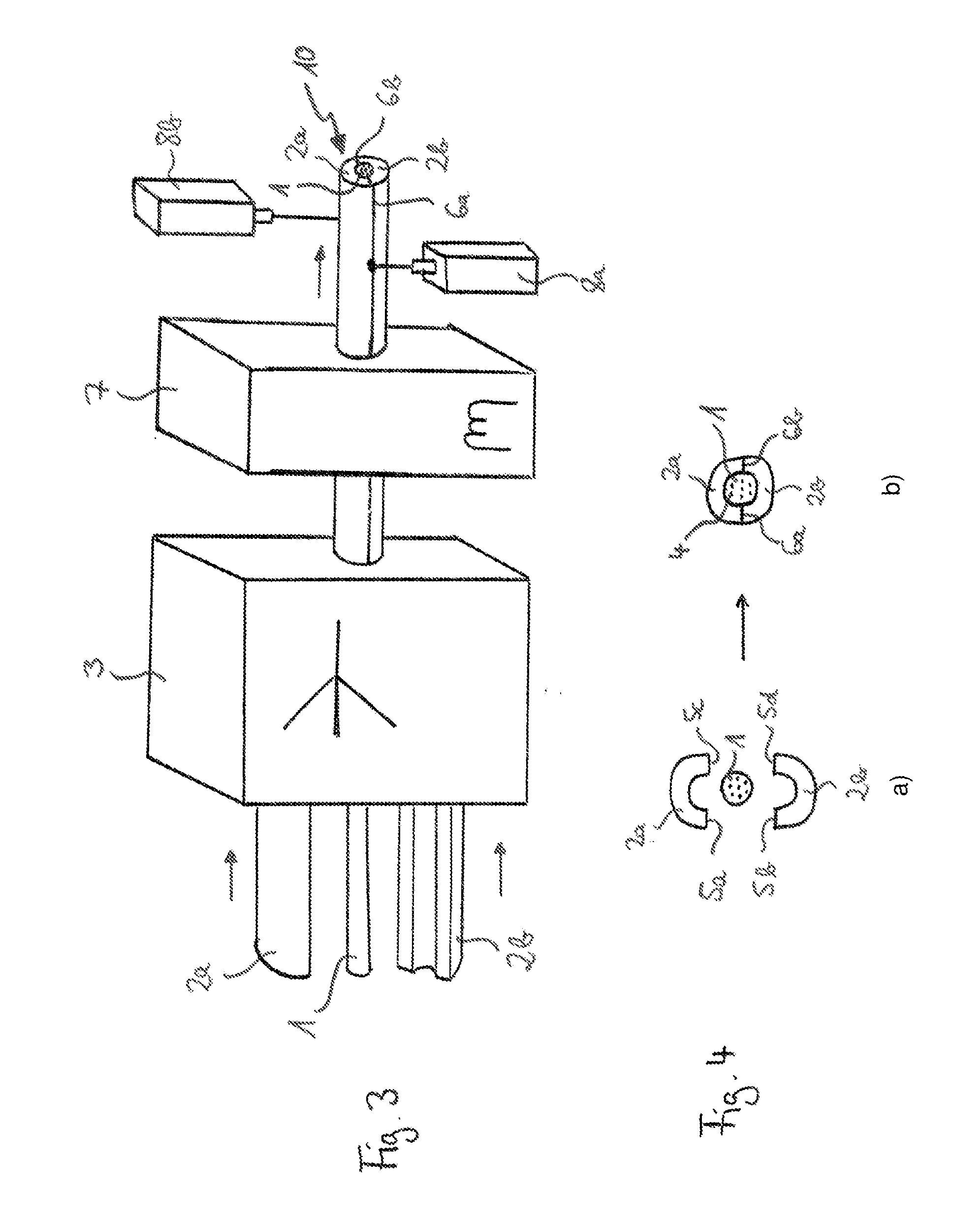Method for producing a superconducting wire, in particular using lead-free solder
a superconducting wire and lead-free technology, applied in the direction of superconducting magnets/coils, magnetic bodies, soldering apparatus, etc., can solve the problems of insufficient stabilization, damage to the superconducting wire, and high temperature, so as to avoid damage to the superconducting filaments in the internal wire, improve mechanical properties, and improve the effect of seam particular stability
- Summary
- Abstract
- Description
- Claims
- Application Information
AI Technical Summary
Benefits of technology
Problems solved by technology
Method used
Image
Examples
Embodiment Construction
[0055]In a schematic representation, FIG. 1 shows the production of a superconducting wire within the scope of the invention in a first variant.
[0056]An internal wire 1, circular in this case, which contains superconducting filaments (for example, made of NbTi), and a sheath element 2 (for example, made of copper), which is flat before being preshaped, is continuously fed into a shaping tool 3, and / or drawn through it, wherein the sheath element 2 is plastically deformed.
[0057]The sheath element 2 is initially moved toward the internal conductor 1 and then wrapped around the internal conductor 1, cf. FIGS. 2a) to e), which explain the chronological sequence of the process in the shaping tool 3 in more detail by means of cross section representations. The cross section representations also show the superconducting filaments 4 in the internal wire 1. The two sheath element ends 5a, 5b are then, by plastic deformation, brought into a position in which they are facing each other and in ...
PUM
| Property | Measurement | Unit |
|---|---|---|
| Fraction | aaaaa | aaaaa |
| Thickness | aaaaa | aaaaa |
| Length | aaaaa | aaaaa |
Abstract
Description
Claims
Application Information
 Login to View More
Login to View More - R&D
- Intellectual Property
- Life Sciences
- Materials
- Tech Scout
- Unparalleled Data Quality
- Higher Quality Content
- 60% Fewer Hallucinations
Browse by: Latest US Patents, China's latest patents, Technical Efficacy Thesaurus, Application Domain, Technology Topic, Popular Technical Reports.
© 2025 PatSnap. All rights reserved.Legal|Privacy policy|Modern Slavery Act Transparency Statement|Sitemap|About US| Contact US: help@patsnap.com



